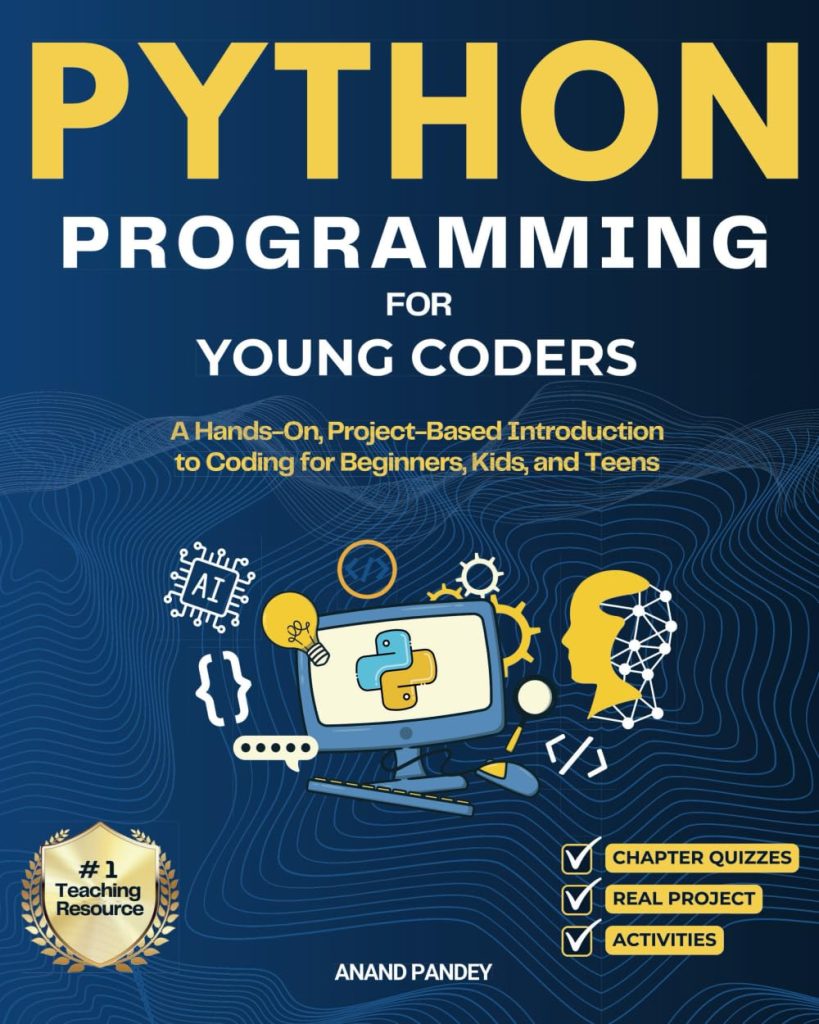
In the realm of game development with Pygame, managing game states and screens is an important aspect of creating a cohesive and engaging experience for players. Game states represent the different stages or modes within a game, such as the main menu, gameplay, pause, game over, or level selection screens. Screens, on the other hand, are the visual representations of these states, displaying the corresponding user interface and graphics.
Proper management of game states and screens is essential for several reasons. First, it helps organize the game logic and separates concerns, making the codebase more maintainable and easier to extend. Second, it allows for smooth transitions between different game modes, ensuring a seamless user experience. Finally, it enables the efficient handling of user input and events across various states and screens.
Pygame provides a flexible framework for managing game states and screens, allowing developers to create custom solutions tailored to their specific game requirements. By using Pygame’s event handling and rendering capabilities, developers can design and implement state management systems that facilitate the creation of complex and interactive games.
import pygame
# Initialize Pygame
pygame.init()
# Set up the game window
window_width, window_height = 800, 600
window = pygame.display.set_mode((window_width, window_height))
pygame.display.set_caption("My Game")
# Game loop
running = True
while running:
# Handle events and game logic
for event in pygame.event.get():
if event.type == pygame.QUIT:
running = False
# Render the game screen
pygame.display.update()
# Quit Pygame
pygame.quit()
The above code snippet demonstrates a basic Pygame setup, including the initialization of Pygame, creation of a game window, and a simple game loop. This serves as a foundation for building more complex game states and screens in subsequent sections.
Implementing a State Manager Class
One effective approach to managing game states and screens in Pygame is to implement a dedicated State Manager class. This class acts as a central coordinator, responsible for creating, switching between, and managing the different states or screens within the game.
Here’s an example implementation of a basic State Manager class:
class StateManager:
def __init__(self):
self.states = {}
self.active_state = None
def add_state(self, state_name, state_class):
self.states[state_name] = state_class(self)
def set_state(self, state_name):
if state_name in self.states:
self.active_state = self.states[state_name]
self.active_state.start()
def update(self, dt):
if self.active_state:
self.active_state.update(dt)
def render(self, surface):
if self.active_state:
self.active_state.render(surface)
In this implementation, the StateManager class has the following key components:
- Initializes the class with an empty dictionary to store the game states and sets the initial active state to
None. - Adds a new state to the state dictionary, where
state_nameis a unique identifier for the state, andstate_classis the class representing that state. - Sets the active state to the state specified by
state_name. If the state exists in the state dictionary, it calls thestart()method of that state to perform any necessary initialization. - Calls the
update(dt)method of the active state, passing in the time delta (dt) since the last frame. This method is typically used to update the game logic and handle user input for the active state. - Calls the
render(surface)method of the active state, passing in the surface (display or window) on which the state should be rendered.
To use the StateManager class, you would typically create an instance of it in your main game loop and call its update() and render() methods each frame. Additionally, you would define separate classes for each game state, inheriting from a base State class or implementing the required methods (start(), update(dt), and render(surface)).
By encapsulating the state management logic within a dedicated class, you can easily add, remove, or switch between different game states without cluttering your main game loop. This approach promotes code organization, reusability, and maintainability, making it easier to develop and extend your game as it grows in complexity.
Creating and Managing Different Game States
In the context of game development with Pygame, creating and managing different game states is an important aspect of building a well-structured and engaging gaming experience. Game states represent the various modes or stages within a game, such as the main menu, gameplay, pause, game over, or level selection screens. Each state typically has its own set of logic, user interface, and visual representation.
To effectively manage game states, a common approach is to create a separate class for each state. These state classes can inherit from a base class or implement a common interface, ensuring consistent behavior and methods across all states. Here’s an example implementation of a base State class and a derived GameState class:
class State:
def __init__(self, state_manager):
self.state_manager = state_manager
def start(self):
pass
def update(self, dt):
pass
def render(self, surface):
pass
class GameState(State):
def __init__(self, state_manager):
super().__init__(state_manager)
# Initialize game-specific variables and objects
def start(self):
# Perform any necessary initialization for the game state
pass
def update(self, dt):
# Update game logic and handle user input
# Example: Move player, update enemies, check for collisions
pass
def render(self, surface):
# Render the game state on the provided surface
# Example: Draw player, enemies, background, UI elements
pass
In this example, the State class serves as a base class that defines the common interface for all game states. It includes three methods:
- Performs any necessary initialization for the state when it is activated.
- Updates the state’s logic and handles user input, taking the time delta (dt) as a parameter to ensure consistent updates across different frame rates.
- Renders the state’s visual representation on the provided surface (e.g., the game window or display).
The GameState class is a derived class that inherits from the State class. It overrides the start(), update(dt), and render(surface) methods to implement the specific logic and behavior for the gameplay state.
To manage and switch between different game states, you would typically use a state manager class (like the one shown in the previous section) or a similar mechanism. The state manager would be responsible for creating instances of the desired state classes, setting the active state, and calling the appropriate methods (start(), update(dt), and render(surface)) on the active state during the game loop.
By separating the game logic and rendering into distinct state classes, you can achieve better code organization, reusability, and maintainability. Additionally, this approach makes it easier to add new game states or modify existing ones without affecting the overall structure of the game.
Designing and Switching Between Game Screens
In Pygame, designing and switching between game screens is an important aspect of creating an immersive and engaging gaming experience. Game screens represent the visual interface that players interact with, such as the main menu, gameplay area, pause menu, or game over screen. Effective screen management ensures smooth transitions between these different modes, contributing to a seamless and polished user experience.
To design and manage game screens in Pygame, a common approach is to create a separate class for each screen. These screen classes can inherit from a base class or implement a common interface, ensuring consistent behavior and methods across all screens. Here’s an example implementation of a base Screen class and a derived MainMenuScreen class:
import pygame
class Screen:
def __init__(self, game):
self.game = game
def handle_events(self, events):
pass
def update(self, dt):
pass
def render(self, surface):
pass
class MainMenuScreen(Screen):
def __init__(self, game):
super().__init__(game)
# Initialize menu-specific variables and objects
def handle_events(self, events):
# Handle events specific to the main menu
for event in events:
if event.type == pygame.QUIT:
self.game.running = False
elif event.type == pygame.KEYDOWN:
if event.key == pygame.K_RETURN:
# Switch to the game screen
self.game.set_screen(GameScreen(self.game))
def update(self, dt):
# Update any menu-specific logic
pass
def render(self, surface):
# Render the main menu screen
surface.fill((0, 0, 0))
# Draw menu elements (e.g., title, buttons)
In this example, the Screen class serves as a base class that defines the common interface for all game screens. It includes three methods:
- Handles the events specific to the screen, such as user input or game logic events.
- Updates the screen’s logic and any associated objects, taking the time delta (dt) as a parameter to ensure consistent updates across different frame rates.
- Renders the screen’s visual elements on the provided surface (e.g., the game window or display).
The MainMenuScreen class is a derived class that inherits from the Screen class. It overrides the handle_events(events), update(dt), and render(surface) methods to implement the specific logic and behavior for the main menu screen.
To switch between different game screens, you can create an instance of the desired screen class and set it as the active screen in your game loop. Here’s an example of how you might implement screen switching in your main game loop:
class Game:
def __init__(self):
pygame.init()
self.screen = pygame.display.set_mode((800, 600))
self.clock = pygame.time.Clock()
self.running = True
self.active_screen = MainMenuScreen(self)
def run(self):
while self.running:
dt = self.clock.tick(60) / 1000 # Delta time in seconds
events = pygame.event.get()
self.active_screen.handle_events(events)
self.active_screen.update(dt)
self.active_screen.render(self.screen)
pygame.display.flip()
def set_screen(self, screen):
self.active_screen = screen
game = Game()
game.run()
In this example, the Game class initializes Pygame and sets the initial active screen to the MainMenuScreen. The run() method contains the main game loop, where it retrieves the events, updates the active screen, and renders it on the display surface. The set_screen(screen) method allows you to switch to a different screen by setting the active_screen attribute.
By separating the game screens into distinct classes and managing them through a centralized mechanism, you can achieve better code organization, reusability, and maintainability. Additionally, this approach makes it easier to add new screens or modify existing ones without affecting the overall structure of the game.
Handling Input and Events in Pygame
Handling input and events is an important aspect of game development with Pygame. It allows players to interact with the game and ensures that the game responds appropriately to user actions. Pygame provides a robust event handling system that enables developers to capture and process various types of events, such as keyboard input, mouse movements, and window events.
To handle input and events in Pygame, you can use the pygame.event.get() function, which returns a list of all the events that have occurred since the last call. Here’s an example of how to handle events in a game loop:
import pygame
# Initialize Pygame
pygame.init()
# Set up the game window
window_width, window_height = 800, 600
window = pygame.display.set_mode((window_width, window_height))
pygame.display.set_caption("My Game")
# Game loop
running = True
while running:
# Handle events
for event in pygame.event.get():
if event.type == pygame.QUIT:
running = False
elif event.type == pygame.KEYDOWN:
if event.key == pygame.K_ESCAPE:
# Handle the Escape key press
pass
# Update game logic
# Render the game screen
pygame.display.update()
# Quit Pygame
pygame.quit()
In this example, the game loop iterates over the list of events returned by pygame.event.get(). If the event type is pygame.QUIT, which occurs when the user closes the window, the game loop is terminated. If the event type is pygame.KEYDOWN, which indicates a key press, the code checks if the key pressed is the Escape key (pygame.K_ESCAPE) and handles it accordingly.
Pygame provides a wide range of event types for handling different types of input and events, such as mouse motion, mouse button clicks, joystick input, and window events (e.g., resize, focus, etc.). You can find the complete list of event types in the Pygame documentation.
In addition to handling events, Pygame also provides functions for retrieving the current state of input devices, such as pygame.key.get_pressed() for checking which keys are currently pressed, and pygame.mouse.get_pos() for getting the current position of the mouse cursor.
Here’s an example of how to handle continuous keyboard input using pygame.key.get_pressed():
import pygame
# Initialize Pygame
pygame.init()
# Set up the game window
window_width, window_height = 800, 600
window = pygame.display.set_mode((window_width, window_height))
pygame.display.set_caption("My Game")
# Game loop
running = True
while running:
# Handle events
for event in pygame.event.get():
if event.type == pygame.QUIT:
running = False
# Get the current state of the keyboard
keys = pygame.key.get_pressed()
# Handle continuous input
if keys[pygame.K_LEFT]:
# Move left
pass
elif keys[pygame.K_RIGHT]:
# Move right
pass
# Update game logic
# Render the game screen
pygame.display.update()
# Quit Pygame
pygame.quit()
In this example, the pygame.key.get_pressed() function returns a list of boolean values representing the state of each key on the keyboard. The code checks if the left or right arrow keys are pressed and handles the corresponding movement logic.
By effectively handling input and events, you can create responsive and interactive games that provide a seamless experience for players. Pygame’s event handling system offers a flexible and powerful way to capture and process user input, enabling you to create engaging and immersive gaming experiences.






